8. Peeping Tom (1960)
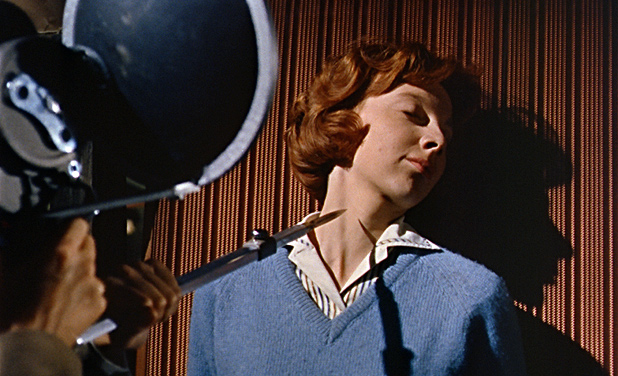
“I have always felt that Peeping Tom says everything that can be said about filmmaking,” enthuses admirer Martin Scorsese, “about the process of dealing with film, the objectivity and subjectivity of it and the confusion between the two. Peeping Tom shows the aggression of it, how the camera violates.”
When Michael Powell’s (The Red Shoes [1948]) Peeping Tom was initially unleashed back in 1960 it was met with near universal derision and contempt and famously destroyed Powell’s considerable career.
A disturbing and challenging psychological thriller cloaked in moral ambiguity, Powell’s film presents a troubled young man, Mark Lewis (Carl Boehm, brilliant), who leads his quarry, susceptible young women, into thinking he’s a documentary filmmaker. But Mark’s camera has a lethal metal spike attached to it, which he uses to murder his subjects.
Released the same year as Hitchcock’s similarly convergent shocker Psycho (to be found further on down this list), both films feature troubled, repressed, dangerous young men with sympathetic and amiable qualities who nonetheless are vicious killers.
Mark uses his curious camera to capture his intrusive emotional state, foisting his troubled past onto his lovely young victims on ways that suggest a vérité style, making the viewer almost complicit in the garishly depicted offences, as if the very act of watching the film somehow enables Mark’s bloodlust.
No doubt so vile a suggestion is what upset audiences and critics at the time, when such perversity and savagery was a rarity and Powell’s obvious skills and craftsmanship as a visual storyteller, in the past used for uncensorable and innocent cinema all of a sudden so red in tooth and claw.
7. Deep Red (1975)
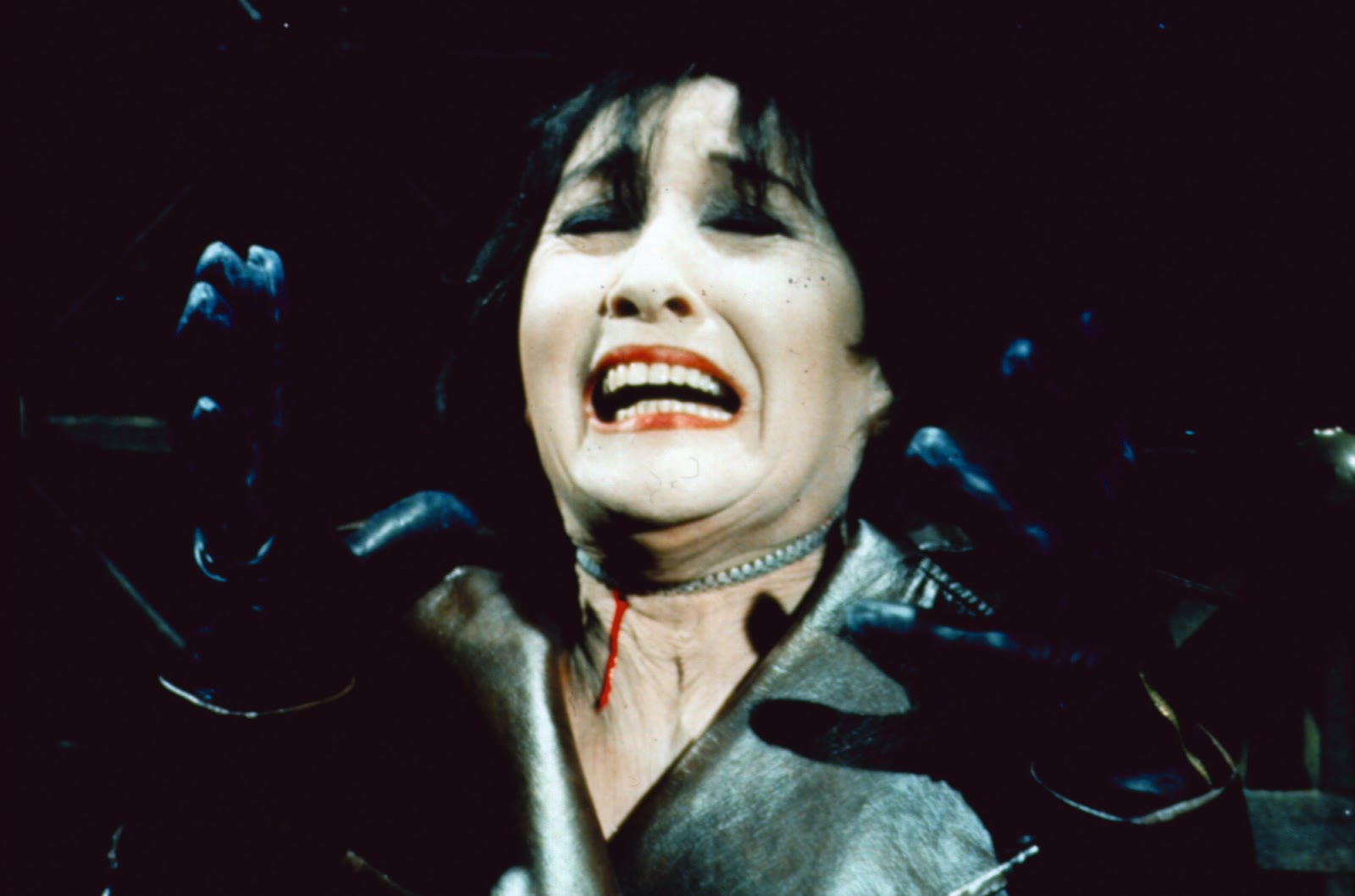
Deep Red makes for an excellent introduction to Dario Argento’s unfolding and expanding style of horror, and it brilliantly boasts his interlaced allure to both beauty and abomination. Argento’s garish cinematic style––equal parts gruesome and gorgeous––is uncompromising and upsetting, with OTT gore, dazzling imagery, eerie nostalgia, and an almost endless parade of shocks and suspense.
American pianist Marcus Daly (David Hemmings) lives in Rome where he witnesses the brutal and gruesome murder of a famed psychic medium, Helga Ulmann (Macha Méril), he becomes both haunted and obsessed with the murderer’s identity. In cahoots with Marcus is an investigative reporter Gianna Brezzi played by Daria Nicolodi, who has high hopes of landing a big scoop cracking the now notorious and ongoing “hatchet murders” case.
High-style horror and the relentless male gaze, particularly when reflected in a bright mirror-like crimson puddle of blood, in an id-driven narrative nightmare of memories, mistakes, Christmases, and murder. Deep Red is an unbending and electrifying thriller.
6. Halloween (1978)
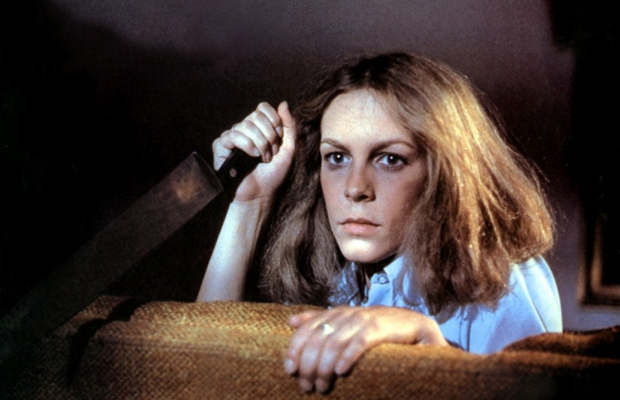
Halloween is an absolutely merciless thriller, a movie so violent and scary that, yes, I would compare it to Psycho,” raved Roger Ebert in his original review of the film, exuberantly adding: “It’s a terrifying and creepy film about what one of the characters calls Evil Personified… Halloween is a visceral experience––we aren’t seeing the movie, we’re having it happen to us.”
Few films have left such a lasting mark on the horror genre as a whole as 1978’s Halloween. Sure, there had already been a number of slasher films with nasty boogeyman-like baddies, but never quite like this. Carpenter and Debra Hill wrote the script in a scant two weeks and shot it quickly, on a shoestring budget, blissfully unaware that it would gross $100 million, becoming a massive success for such a small-scale indie.
A bare-bones plot about mental patient escapee Michael Myers (Nick Castle), donning a mask and haunting and hounding teen Laurie Strode (a then unknown Jamie Lee Curtis, soon be dubbed “scream queen” and international star) would play with predator-prey tropes to startling and authentic effect.
Carpenter, using a simplistic subjective camera, and a startling soundtrack—composed by himself as an homage to Goblin’s score for Dario Argento’s Deep Red—would stir untarnished shock value and terrible anxiety for decades to follow.
Brilliantly paced with unnerving long takes and fist-pumping confrontations between Michael and Laurie, the feeling of imminent disaster is hard to shake even long after the end credits scroll. Viscerally breathtaking and sensationally scary, Halloween’s influence and chef d’oeuvre prominence is undeniable.
5. The Vanishing (1988)
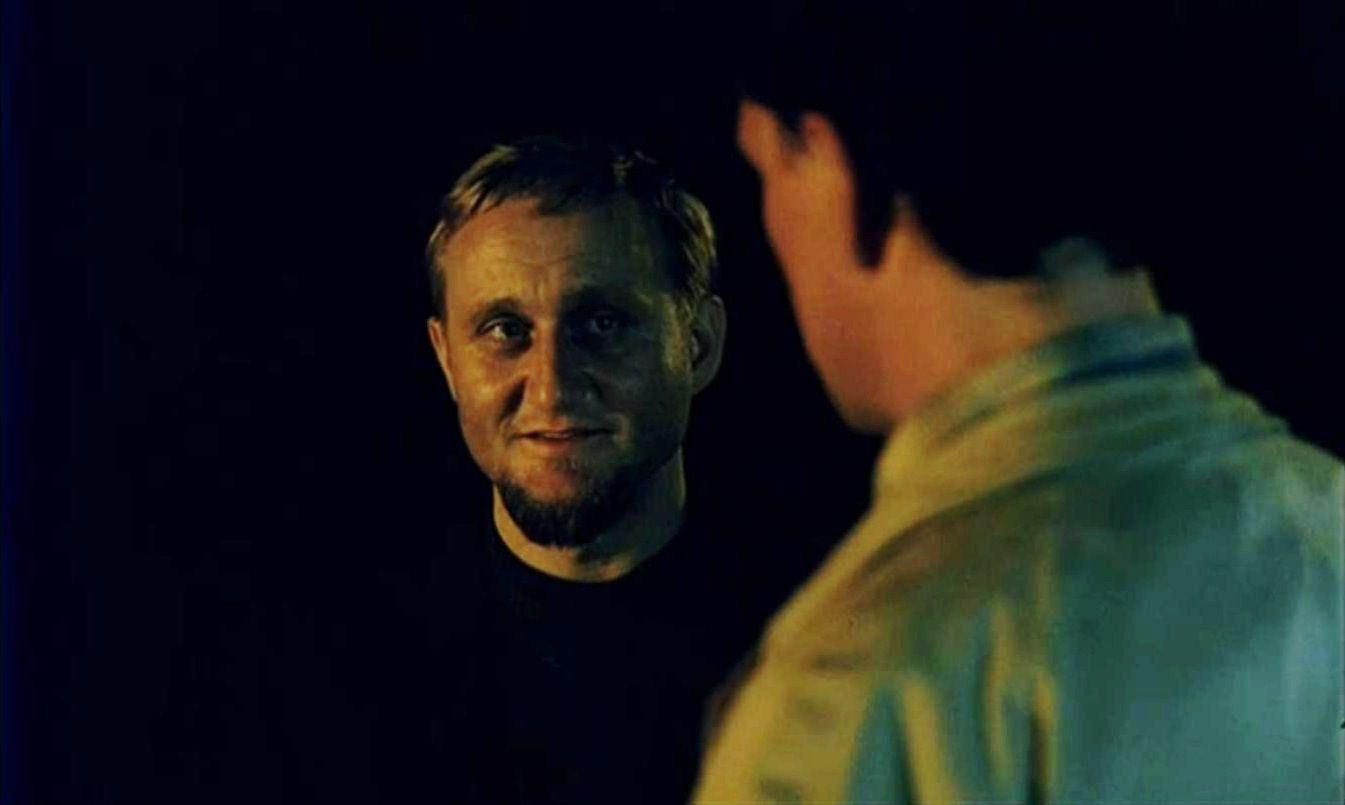
George Sluizer’s Dutch chiller, that he’d later remake for American audiences (with Sandra Bullock no less, and don’t bother watching it, it’s not good), is a tightly wound, harrowing ordeal that’s full of surprises.
Adapted from Tim Krabbé’s novella “The Golden Egg”, The Vanishing fixes its bleak gaze upon the disappearance of Saskia Wagter (Johanna ter Steege), a young woman last seen at a service station with her boyfriend, Rex Hofman (Gene Bervoets) while on vacay in France. Soon it becomes Rex’s obsession to discover the fate of Saskia, and as the years go by, his idée fixe becomes all consuming, and shockingly, his troubles have only begun.
The Vanishing’s uncompromising finale boosts it into the upper echelon of Hitchcockian horror to be sure, but the film as a whole also functions as a master class in unsettling moments and slowly ratcheting terror as Rex hunts the slyest of serial killer.
An intellectual thriller of this ilk is rare, that it conjures equal measures of cursory family life and detached doom with such shrewd elegance resulting in one of the most ferocious climaxes of any film ever buoys The Vanishing into the sinister celestial. So much so that Stanley Kubrick famously and enthusiastically said to Sluizer that he’d watched his film three times, adding it was “the most horrifying film I’ve ever seen.”
4. Dressed to Kill (1980)
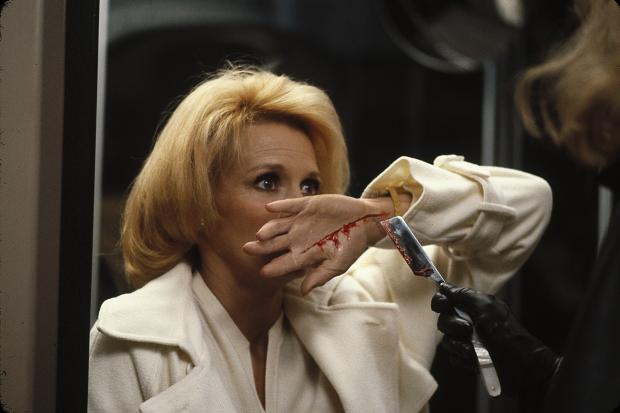
A controversial film upon its release that found director Brian De Palma labelled a misogynistic chauvinist, a sell-out, and a Hitchcock plagiarist by his critics, his vast legion of fans and his peers all know better today as they did then. To his many admirers and to the critical establishment beyond the populist American crowd he is regarded as an auteur, an avant-gardist, an au fait satirist, a passionate independent iconoclast and an articulate intellectual.
Dressed to Kill is as sharp and explicit as it gets and still manages to keep its tongue firmly planted in its cheek all the while. From its fetishized slo-mo opening with a soft-core flourish as housewife Kate Miller (Angie Dickinson, excellent) has a sudsy fantasy in the shower to her brutal Psycho-esque butchering––complete with vivid violin score––in an elevator before the first act has finished, this is a masterfully made symphony of sensuality and terror.
Eye witness Liz Blake (Nancy Allen), who doubles as an unreliable escort, Kate’s intelligent teenage son Peter (Keith Gordon), and Kate’s eccentric psychiatrist Dr. Robert Elliott (Michael Caine) may hold the secret to Kate’s death. But who do we trust amongst these three, if any?
Dressed to Kill dips into dark fantasy on several occasions, combining sensuality and danger at every turn, smashing taboos––gender dysphoria is portrayed with acrimony––and it’s all done with such wild and varying techniques and flourish that it will leave you gasping for air.
3. Silence of the Lambs (1991)
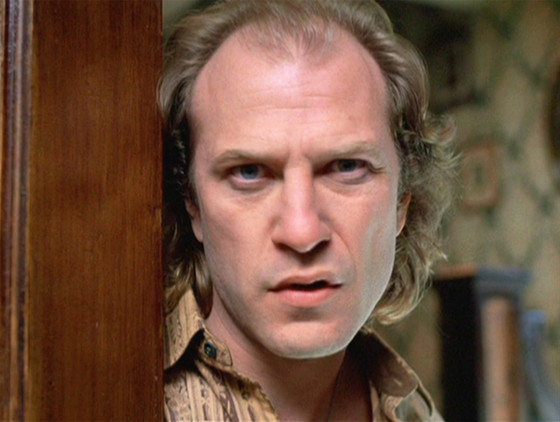
“I go to the cinema because I feel like being shocked,” said Silence of the Lambs director Jonathan Demme while doing the press junket for the film, and that’s as good a mantra as any for Silence of the Lambs when considering the Freudian context, the atmospheric dread, the upsetting camera angles and the unnerving and artfully articulated manifestation of evil that permeates every frame of this monstrous procedural/serial killer thriller.
While it’s Ted Levine’s terrifying Jame Gumb aka “Buffalo Bill” that first gets the FBI rookie Clarice Starling (Jodie Foster) on the case, it’s her encounters with Dr. Hannibal “The Cannibal” Lecter (Anthony Hopkins, in an iconic performance) in the windowless basement confines of the high security mental hospital that may be the most memorable aspects of this nightmarish motion picture.
A cinematic high point for American film of the 1990s, the dual psychopaths at the center of this film are unforgettable human monsters, and the closing line of Lecter about “having a friend for dinner” may be the most ghoulish coda in history.
2. M (1931)
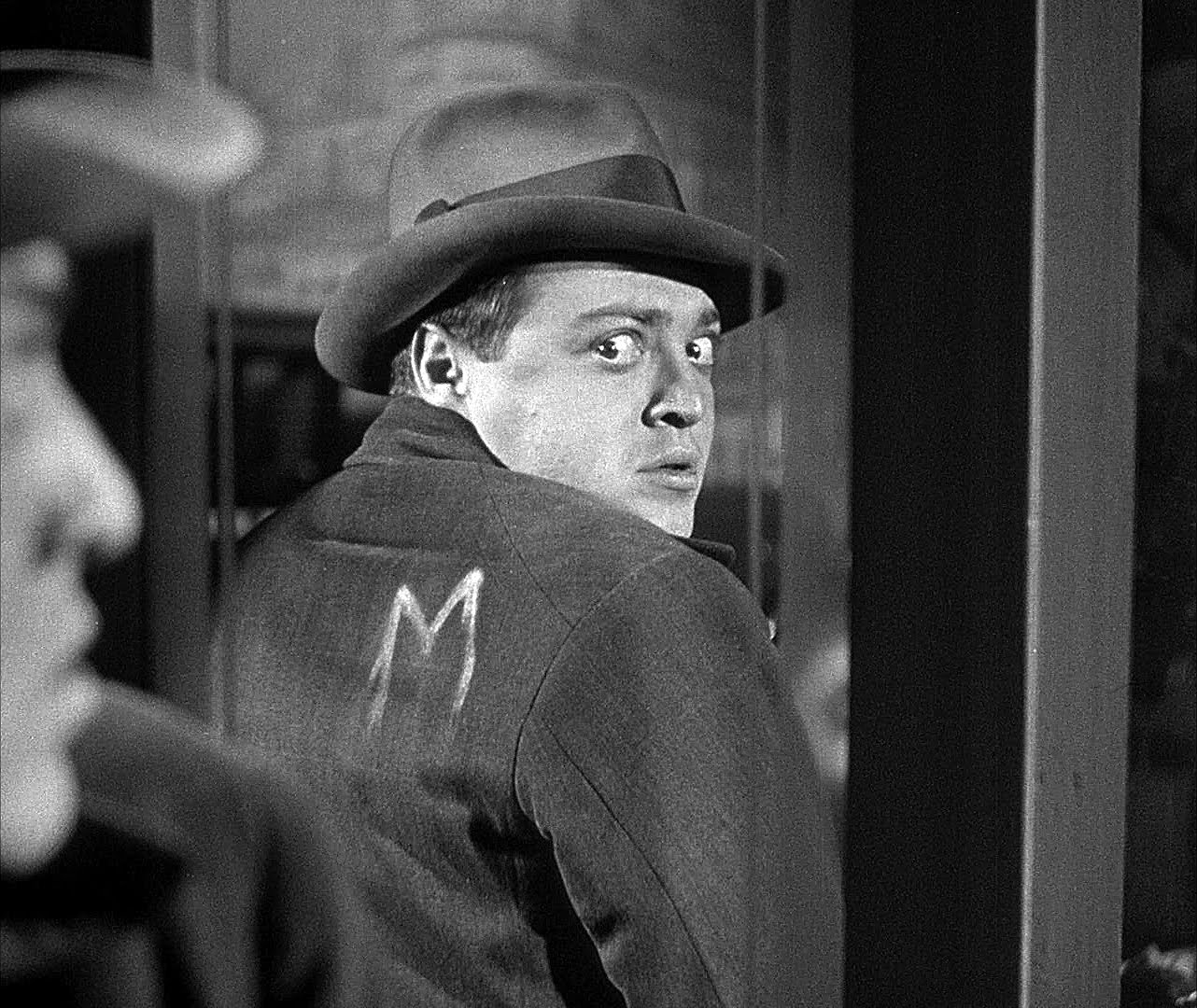
Based on the real life manhunt for a Düsseldorf childmurderer, Fritz Lang’s (Metropolis) first sound film is both an analytical and radical dissertation on authority and law. Peter Lorre’s performance is nothing short of extraordinary as child murderer Hans Beckert, and the role quickly established him as something of a cinematic icon.
Dogging Beckert’s trail is Inspector Lohmann (Otto Wernicke), desperate to catch the scourge plaguing his city for the last eight months. But Lohmann’s not the only man bent on identifying and bringing the murderer to justice. The bolstered police presence has put scads of pressure on the underworld and the black market, causing the formation of a crime syndicate, “The Ring” to track down the killer so that they can return to their shady practices without fear of John Law.
Lang’s contemporary setting and realistic milieu in M was quite incendiary and effective at the time, adding an element of complexity and social commentary that was largely absent in cinema, and certainly the subject matter and sadistic plot elements rattled censors and sensitive theater goers like little else that came before it. Mob rule, the legal system and morality were just some of the themes Lang skewered and dissected in Lang’s murderous masterpiece.
1. Psycho (1960)
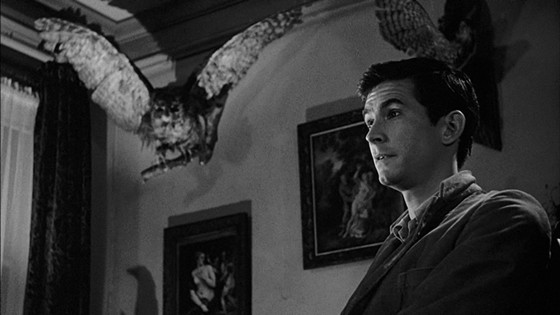
From the shrill violins punctuating Bernard Hermann’s distinguished and unforgettable score to Anthony Perkins’ momentous turn as the amiable and all too charming Norman Bates and all the creeping buildups to unforeseen shocks along the precarious way, Alfred Hitchcock’s Psycho is easily the most influential horror film in history.
The first ever splatter film, Psycho set the template for the slasher subgenre while gleefully breaking every rule in the book as far as upsetting audience expectation at every turn. Toppling romantic principles straight away, Psycho opens on Marion Crane (Janet Leigh), an alluring and likeable young woman who is stealing $40, 000 from her boss and having an illicit affair with a married man to boot.
Not exactly morally upstanding, Marion is still sympathetically rendered and wholly engaging, good-natured even. But before too long she finds herself seeking refuge at the Bates Motel and taking the most famous and ill-advised shower ever photographed.
And old Hitch pulls the carpet out from under us as a half hour into the movie the pleasing protagonist is massacred most ferociously, forcing us to suddenly identify with an accomplice we just can’t be too sure of. What the fuck, Hitchcock? You’re totally breaking all the rules and manipulating us like a pitiable plaything.
The now emblematic Bates house was inspired by Edward Hopper’s Americana paintings, details of the crimes had their genesis in real-life Wisconsin serial killer Ed Gein’s atrocities, all indicating that Hitchcock was perforating the American psyche and subconscious. Family relations, sex, madness, and bloody murder rest at the bosom of one of Hitchcock’s greatest and grittiest works. Psycho isn’t just the nativity of modern horror, it’s also the recognition and acceptance of it.
“We all go a little mad sometimes.
Author Bio: Shane Scott-Travis is a film critic, screenwriter, comic book author/illustrator and cineaste. Currently residing in Vancouver, Canada, Shane can often be found at the cinema, the dog park, or off in a corner someplace, paraphrasing Groucho Marx. Follow Shane on Twitter @ShaneScottravis.